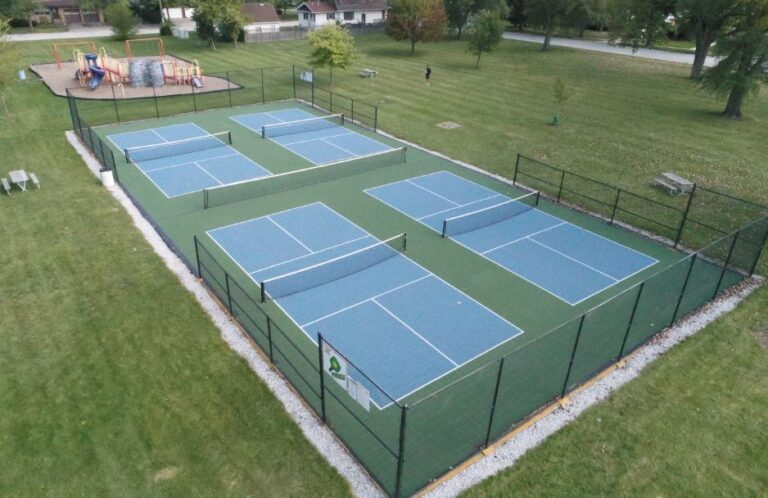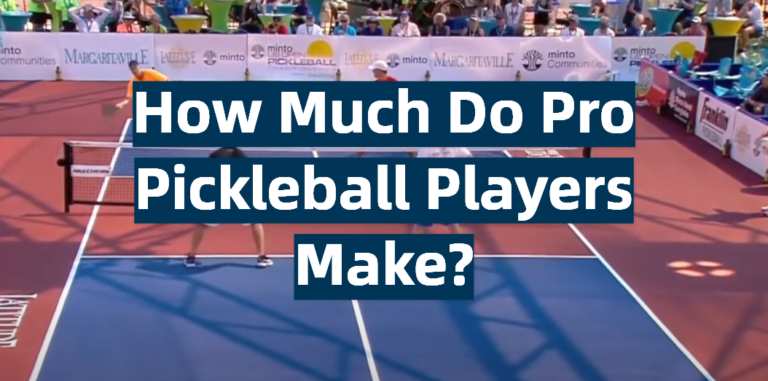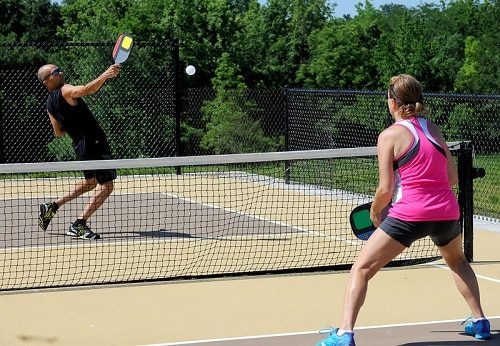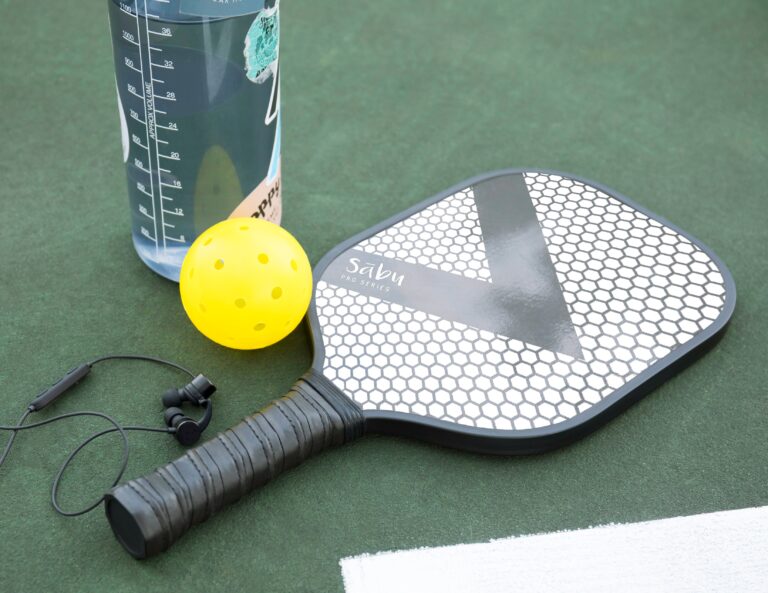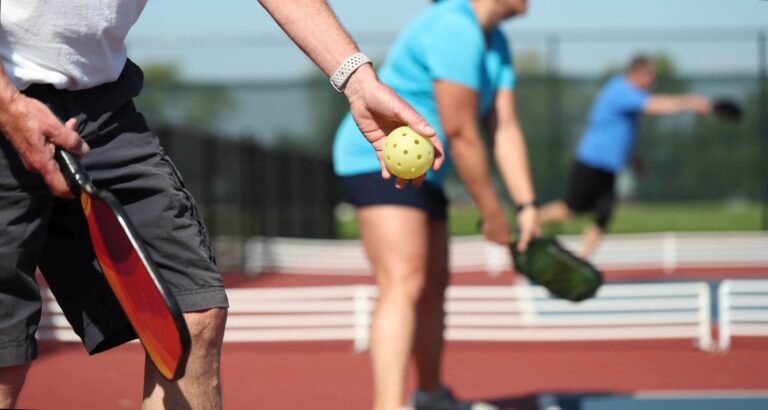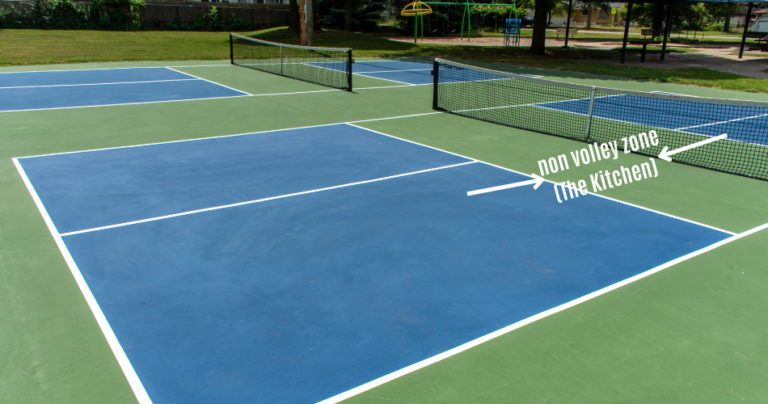How Many Points is Pickleball Played to?
Curious about pickleball scoring and game point structures? Whether you’re a beginner or a seasoned player, understanding the rules of play is essential for a successful game.
We will explore the intricacies of scoring, including how many points the game is played to, the scoring system, and how to win a point. Factors that influence the number of points in a game, such as the level of play, skill level of players, and the format of the game, will also be discussed.
Stay tuned for valuable insights and tips to enhance your pickleball experience!
Key Takeaways:
- Understanding the scoring system is crucial for enjoying and excelling in pickleball.
- The number of points played in a game can vary depending on skill level, format, and scoring system.
- Misunderstandings about scoring can lead to misconceptions, emphasizing the importance of learning the rules and clarifying any confusion.
What is Pickleball?
 Pickleball is a fast-growing sport that combines elements of tennis, badminton, and table tennis. It is played on a court with a net, using paddles and a plastic ball.
Pickleball is a fast-growing sport that combines elements of tennis, badminton, and table tennis. It is played on a court with a net, using paddles and a plastic ball.
Originating in the mid-1960s, pickleball was invented on Bainbridge Island, Washington, by Joel Pritchard, Bill Bell, and Barney McCallum. The trio wanted to create a sport that could be enjoyed by all ages and skill levels. The unique name ‘pickleball’ actually came from the Pritchard family dog named Pickles, who would chase after errant balls during the game.
USA Pickleball, the national governing body for the sport, has since helped popularize pickleball across the country. Players use special paddles, which are larger than table tennis paddles but smaller than standard tennis racquets, to hit the plastic ball over the net. The court layout is similar to a badminton court with a few modifications to suit the unique characteristics of pickleball.
- Equipment used in pickleball includes a perforated plastic ball, designed to reduce speed while maintaining a good bounce.
- The court is divided into specific zones, including both singles and doubles play areas, with a non-volley zone near the net to prevent players from ‘dinking’ (a soft shot technique) when too close.
Basic gameplay rules involve serving diagonally, allowing the ball to bounce before returning it, and scoring points only when serving. Matches are typically played to 11 or 15 points, with a winning margin of two points. Pickleball’s rapid growth can be attributed to its accessibility and the friendly, social atmosphere it fosters among players of all ages.
Importance of understanding scoring and game point structures
Understanding the scoring and game point structures in pickleball is crucial for players to keep track of their progress and determine the winner of each match.
Scoring accuracy is paramount as it not only reflects a player’s skill level but also impacts the overall strategy during a match. Each point earned can sway the momentum and control of the game, requiring players to constantly adjust their techniques and tactics. The rules governing scoring systems ensure fair play and consistency, with the referee playing a key role in monitoring and enforcing these rules to maintain the integrity of the game.
How Many Points is Pickleball Played To?
Games are usually played to 11 points, with a margin of at least 2 points needed to win.
Understanding the Scoring System
The scoring system follows a rally scoring method, where points can be scored by both the serving and receiving teams.
How to Win a Point in Pickleball?
To win a point, a team must be the first to score 11 points and have a 2-point lead over the opponent.
The strategy for scoring points involves assessing the opponent’s weak spots and utilizing quick reflexes to hit the ball precisely.
Teamwork plays a crucial role in maintaining control of the game and outplaying the opposition. Player’s momentum is vital, as a well-coordinated effort can lead to scoring points seamlessly. Serves play a significant role in gaining an advantage, and players must strategize to capitalize on every serve to secure game points. Understanding the rules governing shot placement and court positioning is essential for effective gameplay.
What is a Side Out in Pickleball?
A side-out occurs when the serving team fails to score a point or commits a fault, resulting in a change of service to the opposing team.
When a side-out happens, the momentum of the game can shift dramatically. It gives the opposing team a chance to serve and potentially score on their own terms. Players must be cautious not to commit faults like stepping on or beyond the non-volley line during the serve.
To regain the serve after a side out, the serving team must score a point. The server usually needs to perform a drop serve within the specified rules to initiate play once again.
What Happens When the Score is Tied?
When the score is tied, the game continues until one team gains a 2-point advantage to win the game.
Handling tied scores can add an extra layer of excitement to the game, raising the intensity of gameplay as both teams strive to break the deadlock. In such situations, crucial strategies come into play to secure those additional 2 points needed for victory. One common tactic is for the serving player to focus on consistency and accuracy, aiming to put pressure on the opponents and create opportunities to score. Players must also stay composed, maintain communication, and adapt their game plan to outsmart the opposing team and emerge victorious.
Factors that Affect the Number of Points
Several factors can influence the number of points played in a match, including the skill level of players, the format of the game, and the level of play.
What Level of Play is the Game Being Played At?
The level of play can vary from recreational games to competitive tournaments, each influencing the number of points played in a match.
Recreational games often follow the standard scoring method, playing matches to 11 points with a win by 2 rule.
On the other hand, competitive tournament matches may extend to higher target points, like 15 or 21, to test the players’ endurance and tactical skills.
The intensity of competition rises with each point, leading to strategic shot placements and quicker reflexes to outsmart opponents.
As the match progresses, players must adapt their gameplay to stay ahead and secure every crucial point, making the game thrilling for both participants and spectators.
What is the Skill Level of the Players?
The skill level of players participating in a match can determine the pace of the game and the number of points needed to secure a win.
Players with higher expertise tend to engage in longer rallies, showcasing their exceptional control and shot placement, which can extend the duration of the match. These seasoned players often employ intricate strategies such as dinking, volleys, and lobs, creating intense and captivating gameplay. As the rallies get more competitive, the player’s momentum becomes crucial in dictating the flow of the match, with each point carrying substantial weight. This heightened level of play also raises the stakes, leading to nail-biting scenarios where a single point can shift the entire course of the game.
What is the Format of the Game?
The format of a pickleball game, whether singles or doubles, can influence the number of points played and the strategies employed by the teams.
In terms of playing doubles in pickleball, the scoring dynamics shift slightly compared to singles.
In doubles games, teams have to capitalize on their teamwork, communication, and coordination to outsmart their opponents. The official rules mandate that in doubles, each player gets to serve before handing over the paddle to the other teammate. This strategic rotation not only tests individual skills but also enhances the collaborative aspects of the game.
Explanation of Rally Scoring
Rally scoring means that a point is scored on every serve regardless of which team served, promoting continuous gameplay and strategic decision-making.
This type of scoring system has revolutionized the sport, keeping players engaged and focused throughout each match. With the serving player having the opportunity to score regardless of their service outcome, the intensity of play is heightened, making every point crucial. Players need to stay sharp and adapt quickly to changing situations, as every serve becomes a point-scoring opportunity for both teams. This dynamic nature increases the competitiveness and excitement of the game, ensuring that every moment on the court is filled with strategic moves and swift reactions.
Games played to 11 points
Most pickleball games are played to 11 points, allowing teams to showcase their skills and tactical abilities within a competitive match setting.
In pickleball, playing to 11 points is a crucial element that adds to the excitement and intensity of the game. This scoring system requires players to strategize effectively, as each point gained brings them closer to victory. Whether players opt for aggressive play to quickly reach game point or focus on consistency to outlast their opponents, the strategies employed in these short games are diverse and dynamic.
Games Played to 15 or 21 Points
In some tournaments or formats, games may be played to 15 or 21 points, adjusting the match length and competitiveness based on the selected scoring system.
Playing to 15 points typically results in faster-paced games, pushing players to seize every opportunity to gain points swiftly. On the other hand, opting for the 21-point format may introduce a more strategic element, compelling athletes to pace themselves and execute more complex plays to secure the winning score.
The variations in game lengths can significantly impact player endurance and adaptability. Longer matches often require enhanced concentration and stamina, as athletes navigate through extended rallies and crucial moments with a higher margin for error.
Factors Influencing Game Length
The length of a pickleball game can be influenced by various factors such as player skill levels, game formats, and scoring variations.
Skill level of players
The skill levels of players participating in a match directly impact the game length, with higher skill levels often leading to longer and more intense matches.
Players with advanced expertise tend to engage in extended rallies, employing intricate strategies to outmaneuver their opponents. Their refined technique and quick decision-making skills often result in thrilling back-and-forth exchanges, making games more competitive.
Conversely, matches involving players of varying skill levels may be shorter due to skill discrepancies, as more experienced players can quickly gain the upper hand, thus impacting the overall pace and duration of the game.
Tournament versus recreational play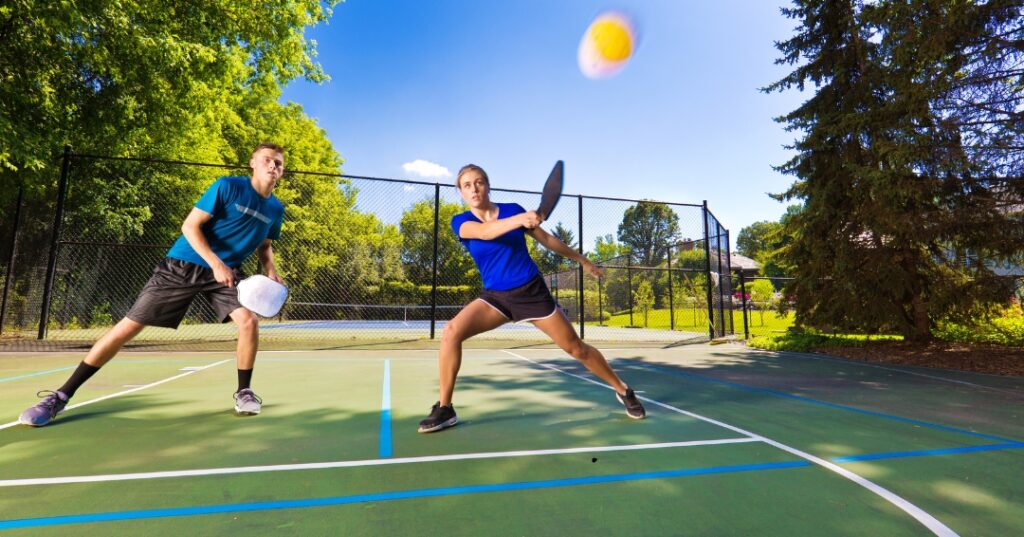
Tournament play in pickleball usually involves longer matches compared to recreational play, as the competitive nature and skill levels of players contribute to the extended game length.
In tournaments, matches can last several hours, especially in higher-level competitions, where players showcase their best skills, pushing the game to its limits. The intensity of tournament play demands a high level of commitment and strategic thinking from competitors, as every point matters significantly in the overall outcome. On the other hand, in recreational play, matches tend to be more casual and relaxed, allowing players to enjoy the game without the pressure of intense competition.
Variations in scoring systems
Different variations in scoring systems can impact the game length and the strategies employed by players to secure victory within the specified rules.
For instance, in a match where the scoring system is based on a point-per-rally method, players often need to focus on consistency and endurance. This method can prolong the game duration, as every point is earned through continuous rallies, requiring players to stay alert and agile throughout.
On the other hand, if a match follows the traditional sideout scoring system, the dynamics of the game can change significantly. Here, players have the chance to score points only when serving, leading to shorter games and emphasizing the importance of strong serving skills.
Clarification of common scoring misconceptions
Addressing common scoring misconceptions in pickleball is essential to ensure fair play, accurate scoring, and an enjoyable experience for all players involved.
One common misunderstanding in scoring revolves around the concept of the kitchen, also known as the non-volley zone. Some players mistakenly believe that any part of the player’s body cannot enter the kitchen during play. According to official rules, a player’s body may cross into the kitchen as long as the player does not hit the ball while standing in the kitchen. This clarification highlights the importance of understanding the official rules to ensure accurate gameplay and proper scoring.
Recap of key points discussed
To summarize, understanding the scoring system, game length factors, and scoring variations is crucial for players to excel in matches and enjoy the competitive spirit of the game.
The scoring system can be a bit different from other racquet sports, making it essential for players to grasp the nuances. Factors like the length of the game can significantly impact the strategy and intensity of play. Whether playing recreationally or in a competitive setting, being aware of the various scoring system variations ensures a fair and engaging match for all participants. Game formats such as singles, doubles, or mixed play also influence how scores are tallied and matches are won.
Encouragement for players to practice and enjoy the game
Players are encouraged to practice consistently and immerse themselves in the game of pickleball to enhance their skills, build camaraderie, and experience the joy of friendly competition.
 By dedicating time to hone their craft on the court, players can unlock their potential and elevate their skill levels to new heights. Embracing the learning process is key, as every practice session offers a chance for improvement and growth. As they engage with fellow enthusiasts in recreational play, they not only fortify their techniques but also foster a deep-rooted love for the sport. With each rally and match, players cultivate a sense of community and shared passion that transcends the game itself.
By dedicating time to hone their craft on the court, players can unlock their potential and elevate their skill levels to new heights. Embracing the learning process is key, as every practice session offers a chance for improvement and growth. As they engage with fellow enthusiasts in recreational play, they not only fortify their techniques but also foster a deep-rooted love for the sport. With each rally and match, players cultivate a sense of community and shared passion that transcends the game itself.
Emphasis on understanding scoring for enhanced pickleball experience
A deeper understanding of scoring mechanics can significantly enhance the overall game experience by promoting fair play, strategic thinking, and competitive engagement.
When players grasp the scoring intricacies, they can seamlessly navigate through matches, capitalize on opportunities, and maintain their momentum throughout games. This comprehension not only sharpens their focus but also fosters good sportsmanship, creating a positive atmosphere on the court.
Whether playing in a casual setting or partaking in intense competitive play, knowing the scoring nuances allows players to make quick decisions, adapt to changing game dynamics, and execute well-planned strategies. The synergy between scoring comprehension and gameplay is essential for players to fully immerse themselves in the thrill of pickleball and elevate their overall performance.
Conclusion
In conclusion, mastering the intricacies of pickleball scoring and game length factors is essential for players to excel in matches, adapt to varying skill levels, and enjoy the competitive thrill of the sport to the fullest.
Frequently Asked Questions
How many points is Pickleball played to?
Pickleball is typically played to 11 points, but can also be played to 15 or 21 points, depending on the agreed upon rules.
What is the scoring system for Pickleball?
Pickleball follows a rally scoring system, meaning that a point is awarded on every serve regardless of which team serves. The first team to reach the agreed upon number of points wins the game.
Can I win a Pickleball game by just two points?
Yes, in order to win a Pickleball game, a team must win by at least two points. This means that if the score is tied at 10-10, the game will continue until one team has a two-point lead.
Is there a maximum number of points in a Pickleball game?
While there is no official maximum number of points for a Pickleball game, most games are played to either 11, 15 or 21 points. However, some casual games may continue beyond that if both teams are tied and playing for a two-point win.
Can a Pickleball game end in a tie?
No, a Pickleball game cannot end in a tie. As mentioned earlier, in order to win a game, a team must have a two-point lead. This also means that if both teams reach the agreed upon number of points and are tied, the game will continue until one team has a two-point lead.
Are there any exceptions to the standard scoring system in Pickleball?
Yes, there are a few exceptions to the standard scoring system in Pickleball. Some leagues or tournaments may use a different scoring system, such as playing to 21 points with no win by two rule. It’s important to clarify the rules before starting a game to avoid confusion.

